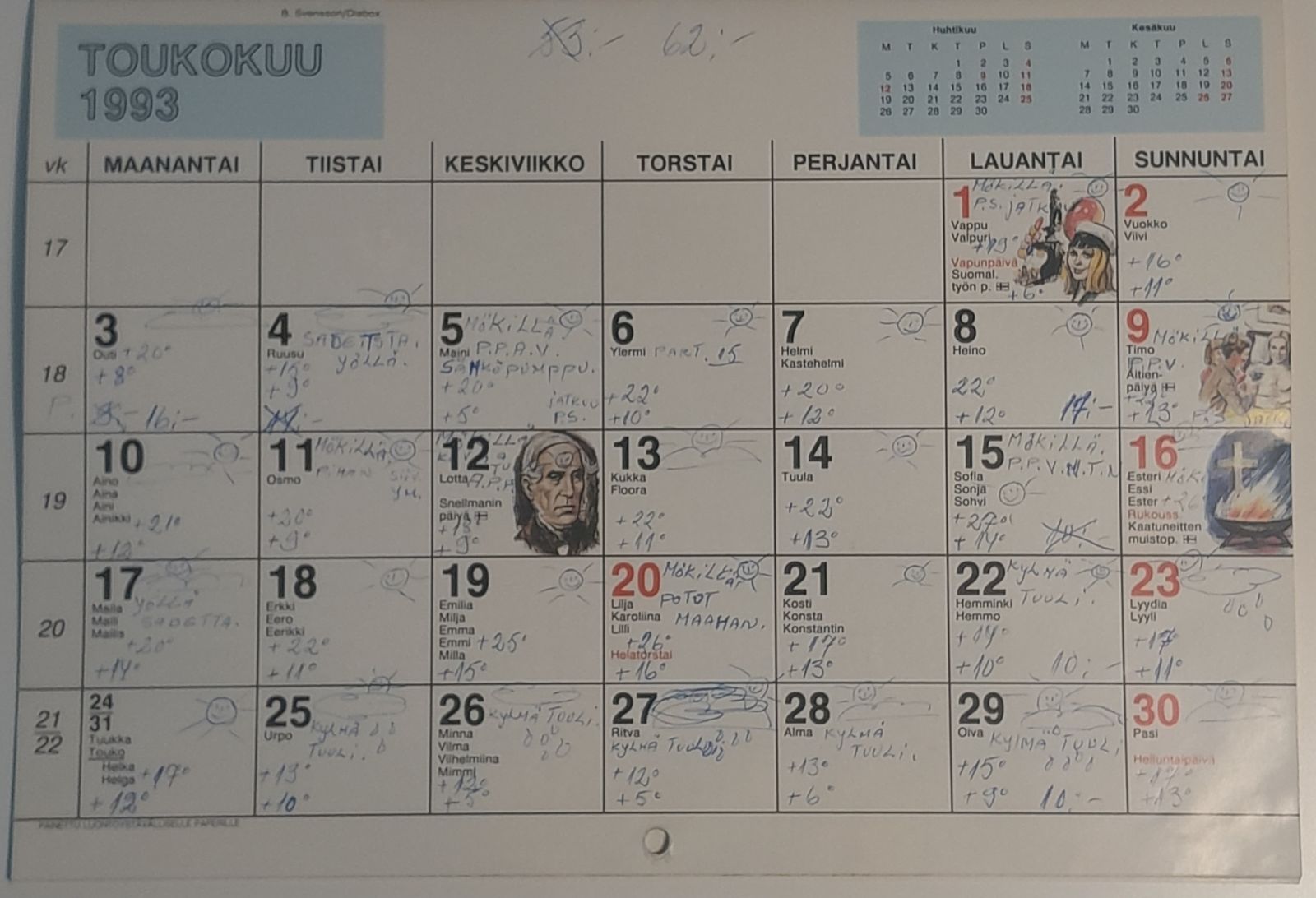Weather Diary
Weather impacts our daily lives in countless ways, from deciding what to wear to influencing travel plans. Understanding weather patterns and phenomena is a fascinating field of study known as meteorology. For hobbyists, keeping a weather diary can be an fun way to delve into meteorology and observe how weather changes over time.
My grandmother kept weather diary for decades. She didn't had any fancy instruments or weather station. Just a thermometer, hygrometer and barometer. And besides thermometer, accuracy of these instruments were questionable at best and very rarely recorded. She would record daily weather for what she could see from the instruments and thorough the window. She had this certain kind of calendar where she would draw clouds, rain, smiling sun or other small symbols often with both morning and evening temperatures for each day. She would also make notes for unusual weather events like 2004 Indian Ocean earthquake and tsunami. So, that is where I got my interest in weather.
What is Meteorology?
Now let's make this clear: Meteorology is the scientific study of the atmosphere that focuses on weather processes and forecasting. It involves the observation, explanation, and prediction of weather events. Meteorologists use data from satellites, weather stations, and radar systems to understand and predict weather patterns. Key elements studied include temperature, humidity, wind, and precipitation.
I'm just a hobbyist. Amateur at everything. Including weather and climate. Like most things on this site, I just have an interest. And I do mostly random things to satisfy that interest. Don't take this too seriously.
What is a weather diary?
A weather diary is a simple tool for understanding the local climate. Here are a few reasons to start one:
Observation Skills: Keeping a diary enhances your ability to observe and record weather conditions accurately.
Patterns and Trends: By tracking daily weather, you can identify patterns and trends over weeks, months, and years.
Educational Value: It's an excellent way to learn about meteorological concepts and phenomena.
Historical Records: Your diary can serve as a historical record of weather in your area, useful for personal reference or community information.
Starting Your Weather Diary
 Here's a short guide to help you begin your weather diary
Here's a short guide to help you begin your weather diary
Gather Supplies: This is the best part, shopping! You’ll need a notebook or digital app for recording data. If you prefer digital, there are several weather diary apps available. I recommend pen and paper.
Record Basic Data: Include the date, time, and location. Basic weather data to note:
- Temperature (°C or °F)
- Humidity (%)
- Wind speed and direction
- Precipitation (rain, snow, etc.)
- Cloud cover and type (e.g., cumulus, stratus)
Use Instruments: Invest in basic weather instruments like a thermometer, hygrometer, barometer, and anemometer. There are affordable weather stations available for home use.
Note Unusual Events: Record any unusual weather events, like thunderstorms, hail, or extreme temperatures.
Add Personal Observations: Include how the weather affects daily activities or the environment, like plant growth or local wildlife behavior.
Today weather stations are indeed very inexpensive and surprisingly accurate too. They are also very popular do it yourself projects with Arduino or ESP-series of microcontrollers. You could even use Raspberry pi to create your own server or use service like thingspeak and share the collected weather data with your neighbourhood. There is almost endless possibilities for hobbyists. But as with everything, start with small. Just the temperature is enough, humidity is nice to have. Build up from there.
Keeping a weather diary or just in general observing the weather is a fun hobby that bridges personal interest with scientific inquiry. By observing and recording weather data, you not only better your understanding of meteorology but also contribute valuable information to the broader community.
And who knows, it might leave a nice memory for your grandchildren.
